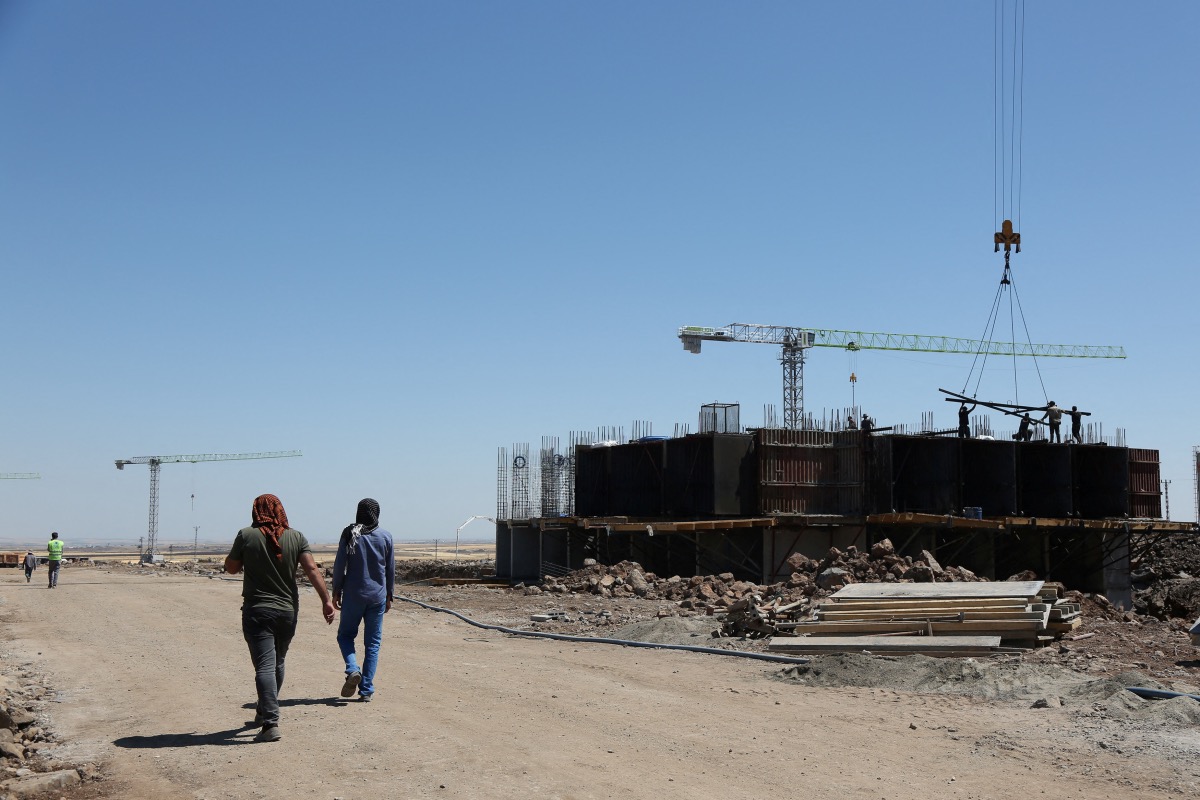
CEYDA CAGLAYAN and BURCU KARAKAS, of Reuters, report…
Istanbul, Turkey
Reuters
Sheltering in a converted shipping container, Ismet Kaplan waits to hear if he’s eligible for one of hundreds of thousands of homes President Tayyip Erdogan promised would replace those ruined by modern Turkey’s deadliest earthquake in February.
Days after the quake and with a national election looming, Erdogan made bold promises. While survivors were still emerging from rubble, he said half the disaster zone would be rebuilt within a year – a total of 319,000 homes.

A new building for earthquake survivors is under construction in Diyarbakir, Turkey, on 26th August, 2023. PICTURE: Reuters/Stringer/File photo
Eight months on, more than a dozen officials, builders and engineers told Reuters that rising construction costs and economic uncertainty have deterred companies from bidding for government reconstruction contracts, making that deadline look hard to reach, especially in the worst-hit areas.
With work underway on a fraction of the planned new buildings in the devastated city of Adiyaman, Kaplan fears a long wait together with his disabled wife and other survivors. They are exposed to summer and winter temperatures in the lines of containers set up as temporary housing after the 6th February disaster.
“I believe it will take years to move.”
– Ismet Kaplan
“I believe it will take years to move,” said Kaplan, whose apartment block collapsed in the quake. His daughter, daughter-in-law and four grandchildren died under falling buildings.
By the government’s own account, 40,000 homes will be ready by the end of November, leaving three months to finish nearly 280,000 more by February.
One senior government official with direct knowledge of the reconstruction plan said the target could be missed, citing insufficient fresh funding to hold new tenders amid rising costs. Another official also cited budget constraints and said new measures were needed to speed things up.
They both said the effort had taken a blow when fewer companies bid for the reconstruction tenders after a post-election economic policy U-turn in June sent the currency plunging.
The officials requested anonymity to speak freely.
In response to questions from Reuters, Erdogan’s office said construction was on schedule and in line with announced targets, saying work had started on 200,000 homes and “those completed will be delivered stage by stage in October, November and December.”
“The disaster zone is the government’s priority,” it said, denying a slowdown in tenders, without providing numbers.
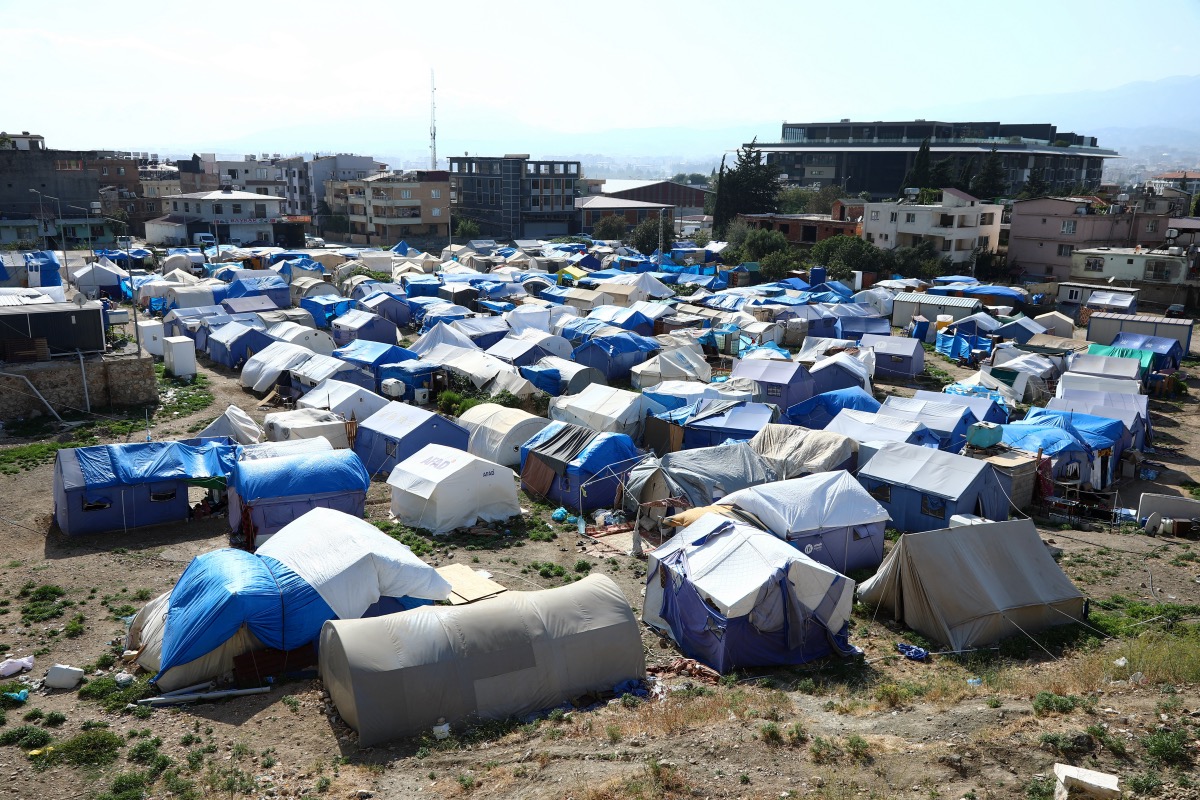
Tents housing the earthquake survivors are seen in Antakya, Turkey, on 9th September, 2023. PICTURE: Reuters/Mehmet Kilic/File photo
As of 6th August, construction was underway on 123,000 homes, according to a Reuters review of the most recent public ministry data, covering the six months from the earthquake.
The ministry data also showed construction had only started on seven per cent of almost 65,000 homes the government promised would be completed in Adiyaman province within two years of the quake.
Ufuk Bayir, secretary general of the Union of Chambers of Turkish Engineers and Architects (TMMOB) in Adiyaman said work had now started on more homes, but predicted just a few hundred will be delivered to Adiyaman residents by year end. TMMOB is aligned with Turkey’s left-wing opposition.
“I see no possibility of all houses being delivered in a year,” said Bayir, who is also a member Adiyaman’s Provincial Coordination Council.
Kaplan, a retired court clerk, checks the official online housing portal regularly. The first response to his June application for a home came last month, saying his request was “being assessed”, he said.
“We have nowhere else to stay and I don’t know how we will survive the winter,” Kaplan said.
Tens of thousands of buildings still await demolition across the disaster zone, and like Kaplan, many survivors remain in tents and container homes as winter approaches in a region where temperatures can drop below freezing.
Rattling an area the size of Netherlands and Belgium combined, the pre-dawn quake flattened entire towns and city centres in the textile- and agriculture-heavy southeast, killing more than 50,000 people.
Nearly 300,000 buildings toppled or were left unusable and millions were left homeless, including war refugees from neighbouring Syria – where the earthquake also killed thousands.
Erdogan says in total 680,000 homes will be finished within two years under a government-funded scheme that will see homeowners repay the costs interest free over 20 years.
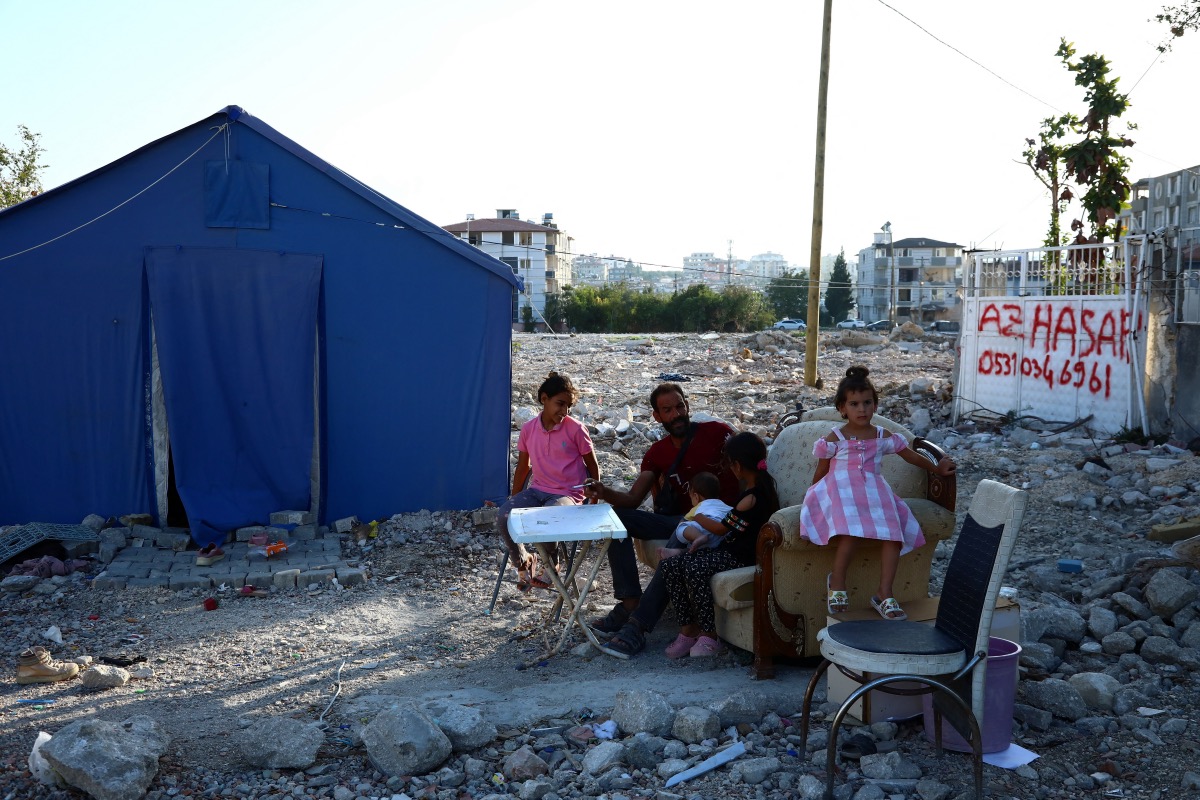
Ammar, a Syrian earthquake survivor, chats with his children outside their tent in Antakya, Turkey, on 9th September, 2023. PICTURE: Reuters/Mehmet Kilic/File photo
A public website showed about five project tenders per day in April, before slowing in May. The data stopped being disclosed on 31st May. Reuters could not establish how many tenders have been issued since. The urbanization ministry did not respond to a question from Reuters about why the data stopped being published.
The urbanisation ministry, the state housing agency (TOKI), and the public procurement authority did not respond to Reuters’ questions on the latest construction figures.
Urbanisation Minister Mehmet Ozhaseki and other government officials have publicly stood by Erdogan’s deadlines. The minister acknowledged in mid-September it was “not an easy task” for TOKI to build so many homes when it usually builds 60,000-70,000 annually.
In a move that could help speed up reconstruction, last week the president’s office published a decree allowing grants and interest free loans for homeowners to build their own houses in the disaster area.
We rely on our readers to fund Sight's work - become a financial supporter today!
For more information, head to our Subscriber's page.
In hard-hit Hatay, Malatya, Adiyaman and Kahramanmaras – which together account for nearly 80 per cent of the homes planned by 2025 – work had started on only 15 per cent of them by August, a Reuters analysis of the official data showed. The presidency said Hatay and Kahramanmaras cities were not behind schedule.
More progress had been made in other affected provinces, Gaziantep and the smaller Kilis, where, by August, work had begun on roughly half of some 45,000 homes promised over two years, the official data show. The government did not respond to questions about why work was more advanced in these regions.
Disaster reconstruction usually takes several years in order to provide well-planned water, sewage, electricity systems, along with other infrastructure, Arvid Tuerkner, Turkey managing director at the European Bank for Reconstruction and Development, said in an interview after a visit to the disaster zone in September.
Any delays in rebuilding the southeast could play a role in a nationwide local vote in March, when Erdogan’s AK Party (AKP) aims to recover the municipal governments in Istanbul, Ankara and other big cities lost to the opposition in 2019.
Mert Arslanalp, assistant professor of political science at Istanbul’s Bogazici University, said Erdogan’s promise to rebuild the area in a year helped him sustain support in the May presidential vote.
“So a failure to deliver on his promises may have ramifications in the local elections,” Arslanalp said.
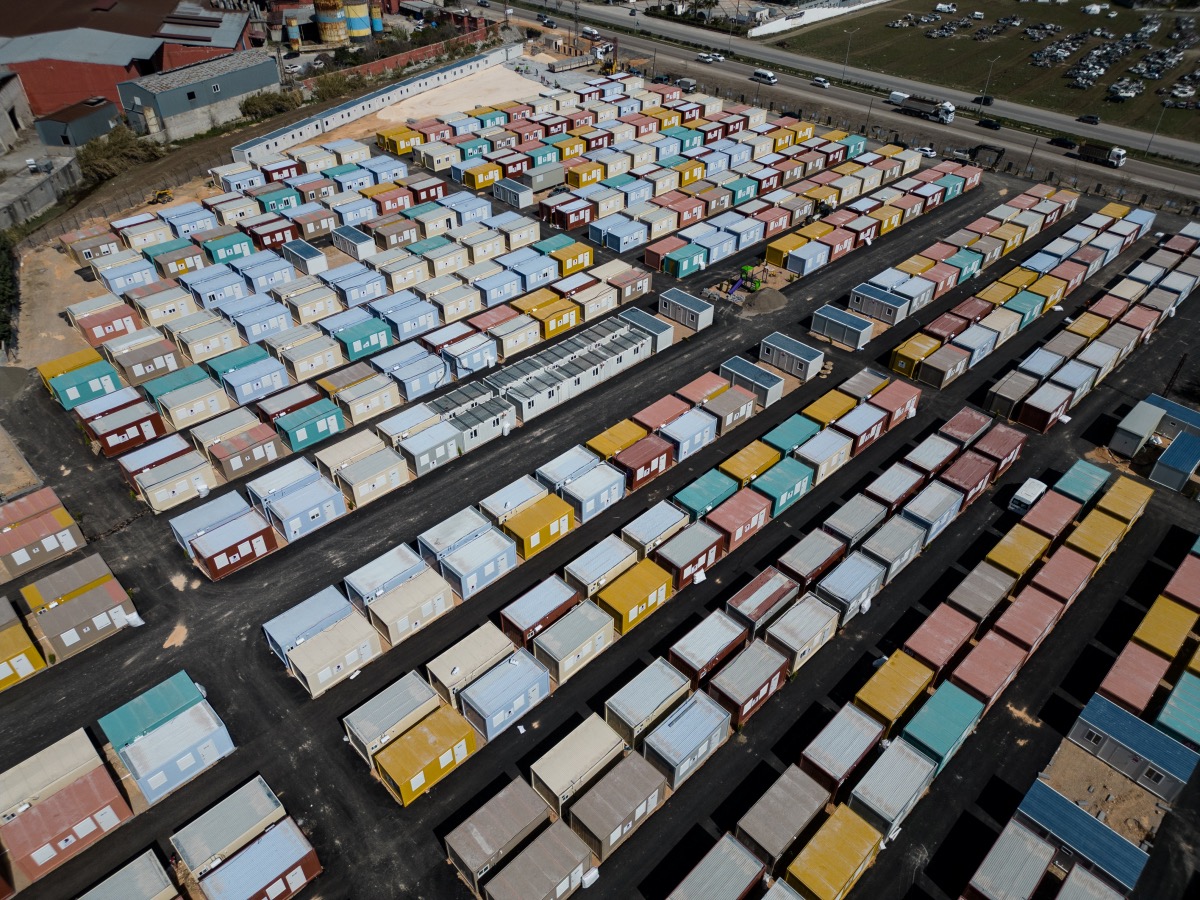
Container homes which were sent from Qatar for earthquake survivors are seen at a container camp before its opening ceremony in Hatay, Turkey, on 11th March, 2023. PICTURE: Reuters/Stringer/File photo
In March, Ankara estimated the earthquake’s cost at $US104 billion and said rebuilding would account for more than half.
After he was appointed in June, Finance Minister Mehmet Simsek said the disaster’s budget impact was “huge” at nearly 10% of GDP, mostly felt over two years. The quake accounts for nearly half of this year’s expected budget deficit-to-GDP ratio.
Partly in response, Simsek raised taxes. He also made a U-turn to more orthodox policies including sharp interest rate hikes to address inflation, which is expected to rise above 65% by year end.
As part of the U-turn, authorities loosened their grip on the lira, triggering a 26% depreciation since the end of May to record lows and compounding expenses for developers.
Rising costs “severely reduced” predictability and had left companies reluctant to bid, the senior government official said.
Up to 70 per cent of costs for Turkish construction companies are indexed to the dollar, according to the head of one major company working on reconstruction with the government, who asked to remain anonymous to speak freely.
Based on previous practice, the government is likely to raise the money on offer for tenders and increase what it pays builders to cover rising construction expenses.
“Our budget resources have been prepared for this huge, comprehensive project and can be updated when necessary,” Erdogan’s office said.
Costs this year had in reality almost doubled, said Tahir Tellioglu, president of the Construction Contractors Confederation, citing inflation, the weak lira and wage hikes.
“We’ve come to a tipping point and the sector cannot take it anymore,” Tellioglu said.
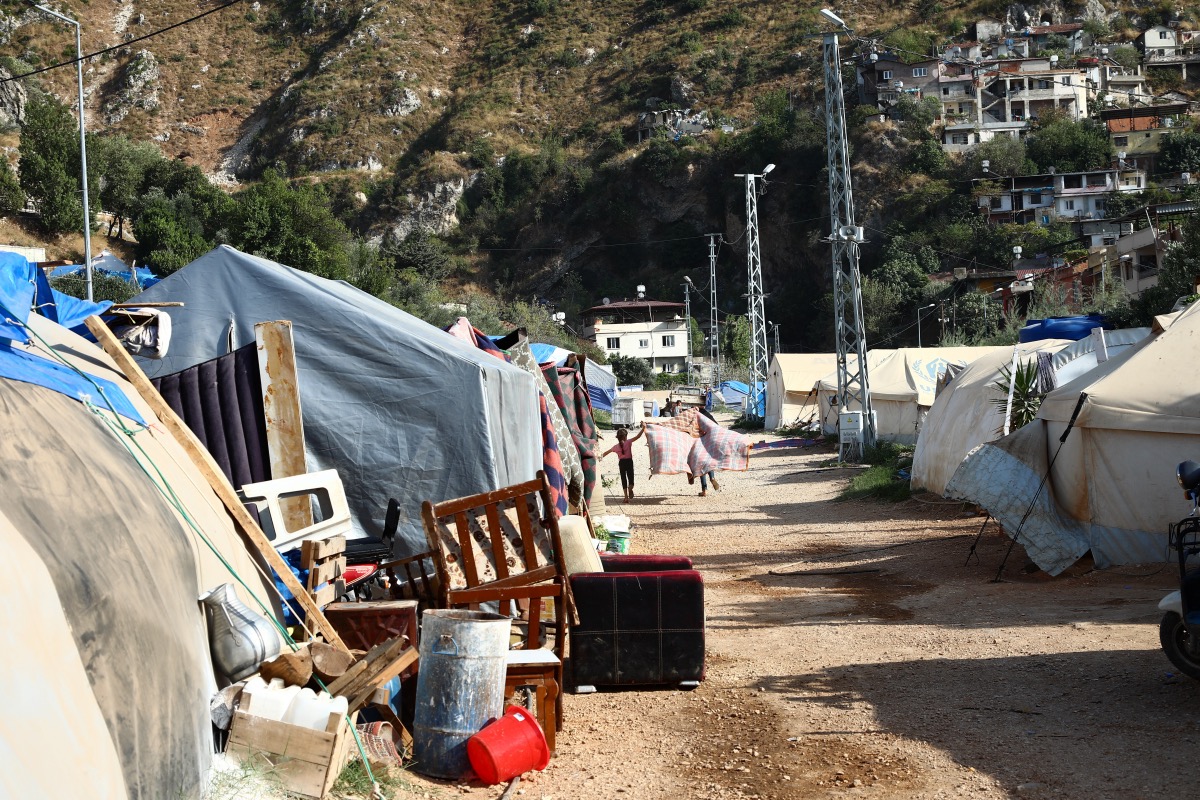
Children play between tents housing the earthquake survivors in Antakya, Turkey, on 9th September, 2023. PICTURE: Reuters/Mehmet Kilic/File photo
In Adiyaman, Bayir said contractors struggled to keep workers, with rivals increasing wages to poach them.
Umit Oktay, a 48-year old welder in Hatay, has been sheltering since April in a container with his wife and three children, and like others is staying put because of the promise of a new home.
“It is almost impossible to move around inside the container home, which looks like a chicken coop,” said Oktay. “But I do not have faith we’ll live in a proper house this winter.”
– Additional reporting by EZGI ERKOYUN, NEVZAT DEVRANOGLU and JONATHAN SPICER






